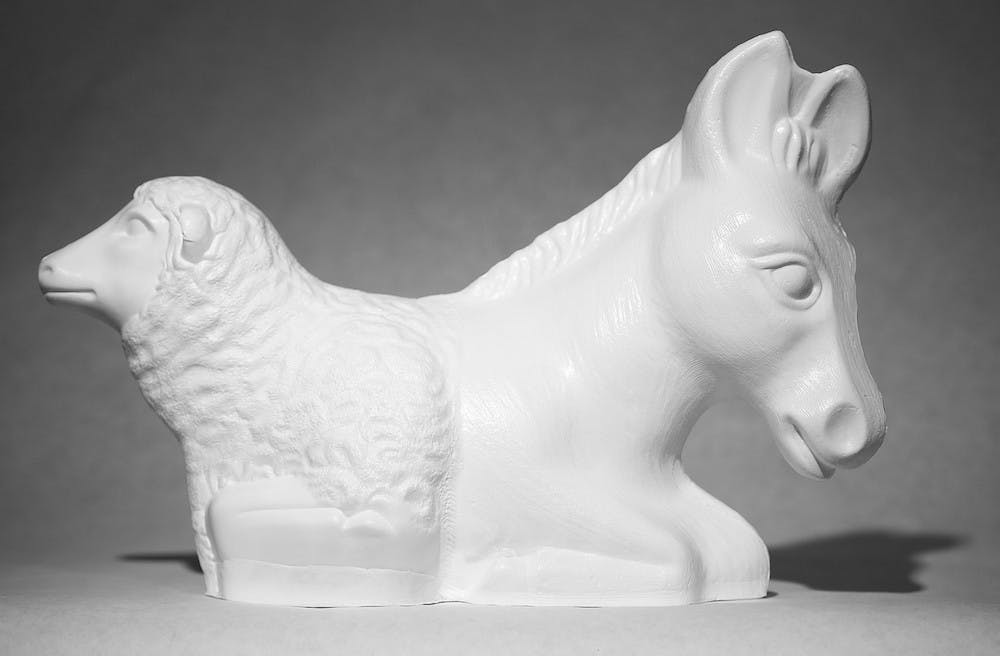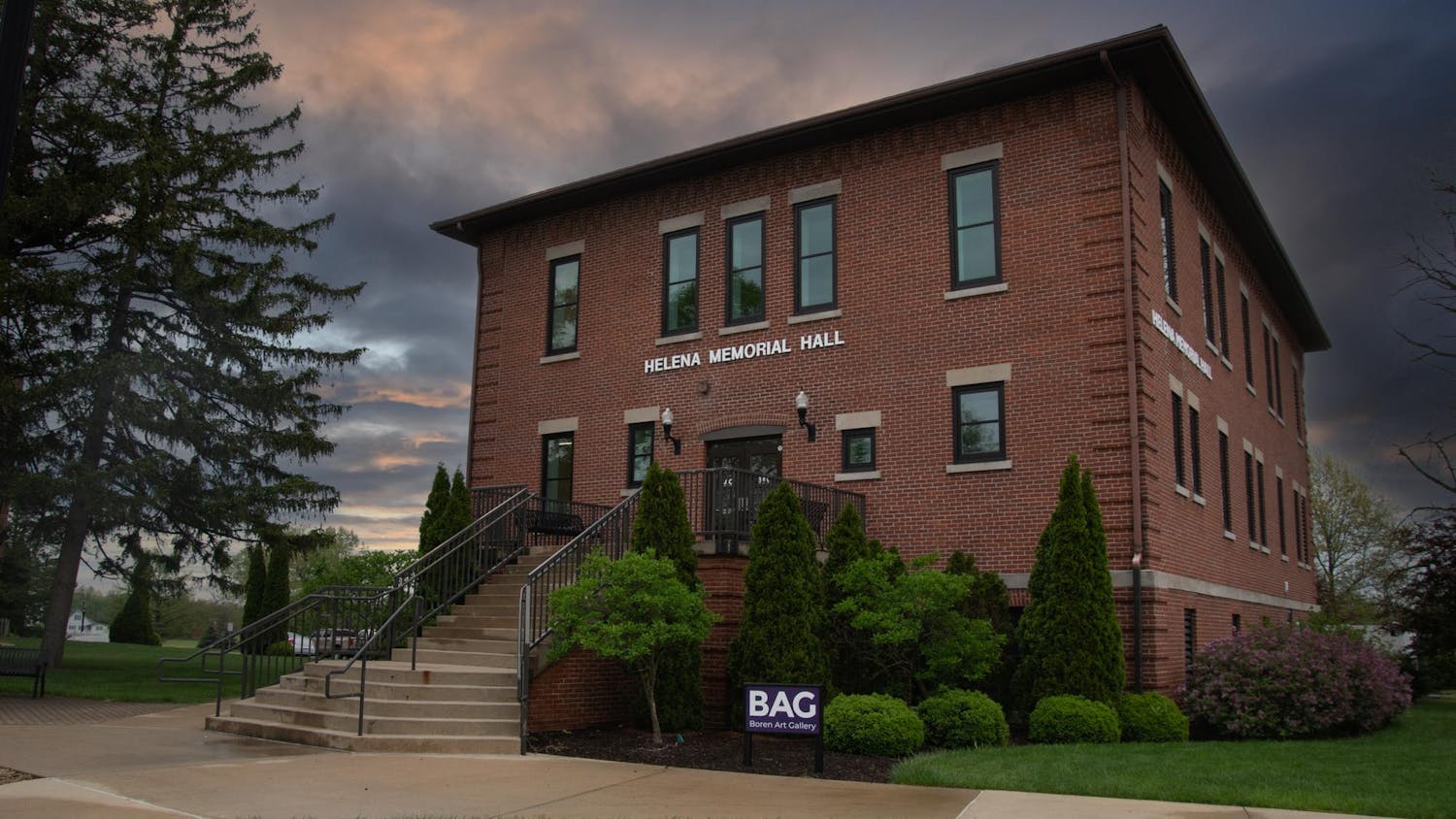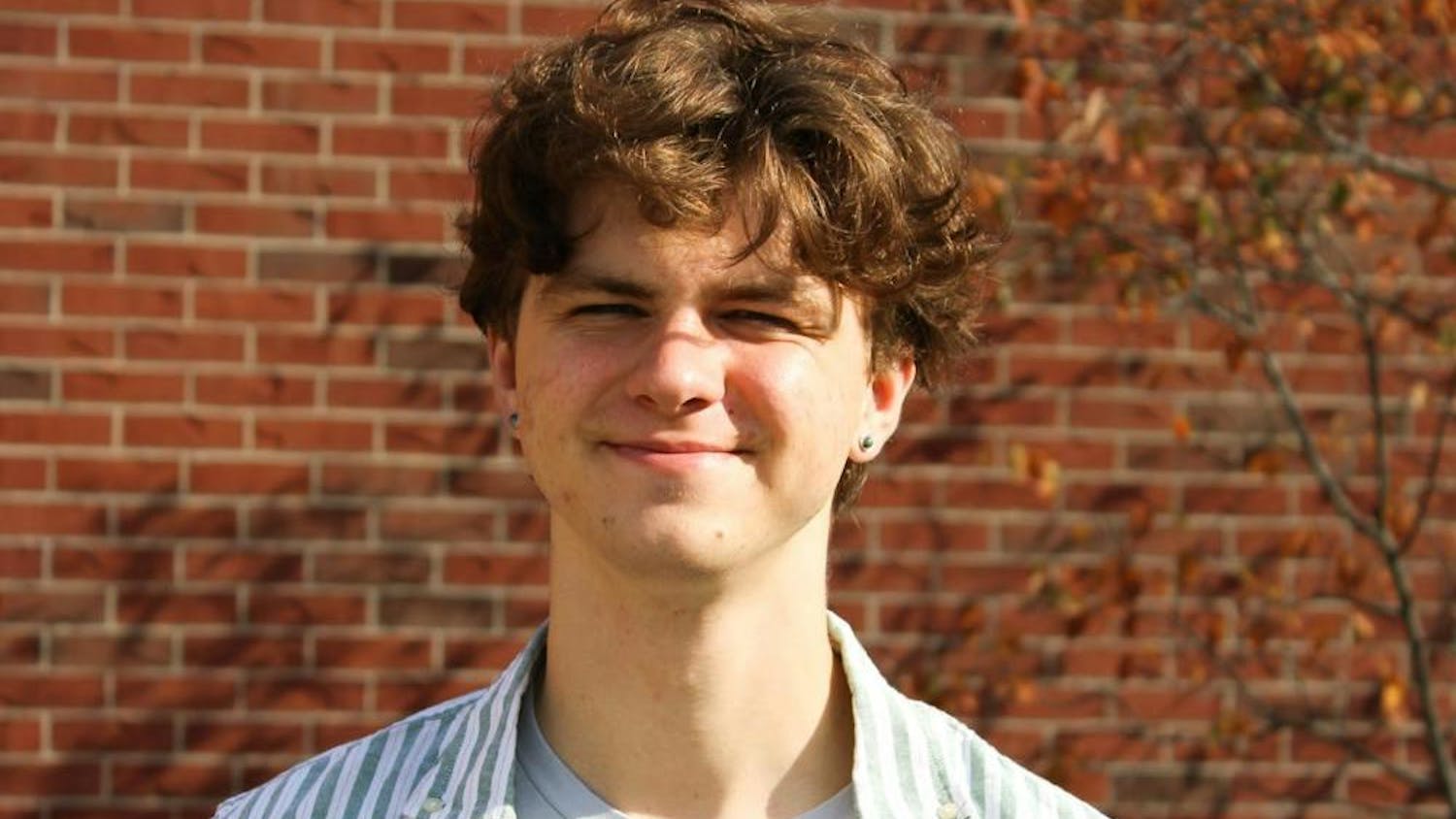 By Katie Pfotzer | Echo
By Katie Pfotzer | Echo
It was standing room only in the room in the basement of Metcalf.
"Let's talk real quietly because I have a hunch we're in violation of about every fire code regulation there is," Jonathan Bouw, co-chair of art department, said.
The crowd was there to hear a lecture by Jeremie Riggleman, assistant professor of art, followed by a viewing of his new exhibition in the main hall of Metcalf titled "Kandy Kote."
The meaning of the title became clear upon entrance into the gallery. Like walking into Willy Wonka's factory, bright colors greeted visitors from every direction. The displayed pieces varied in medium, such as photography, paintings and spray paint. Sculptures were also displayed on various podiums around the room, showcasing several versions of the real star of the show, the "Half-Ass Sheep."
A sculpture exploring the theme of vice and duality, it is the head of a sheep and the head of a donkey, both of which are animals with scriptural significance.
If Riggleman were to explain his work in one word it would be "playful."
Meticulous is another accurate word. Every sculpture was made from a mold, and some additionally posed for a picture. In some of the paintings such as "Gander," "Warm" and "Cool Penguins," every animal is hand stenciled. The spray painted pieces were made of a grid of punched out shapes then layered and painted over with paint and resin.
"There was one surprise, though," Riggleman said standing back from the spray painted canvases and pointing out an "o" shape formed from the depth of the layers. "Because I was working on these so close up, I wasn't viewing them from far away. So when I stepped back, that was a surprise."
According to Riggleman, "Kandy Kote" started as a project in 2006, when Riggleman photographed lawn art documentary style.
He became fascinated with the shapes and colors and what they had to say about the people who put them in their yard.
"I found that often the creatures were memorials or they had been given as a gift and often people felt they had to display the items and once a person started collecting, it kinda piled on a little," Riggleman said.
Riggleman said his inspiration for his art is Bernd and Hilla Becher, whose photographs of industrial buildings are often organized into grids. Another is Don Featherstone, who originally sculpted many of the creatures for a plastics company in the 1950s.
Riggleman was also inspired by other contemporaries who work with found objects.
"I think it is interesting how ordinary, everyday objects can tell a story if you let them," said sophomore Tesia Juraschek after listening to the lecture for the opening of the gallery. "As an art major, it's cool to look at things that we would think of as a leftover can be used to create something new."
The exhibition will be in the main gallery of Metcalf until Feb. 21.





